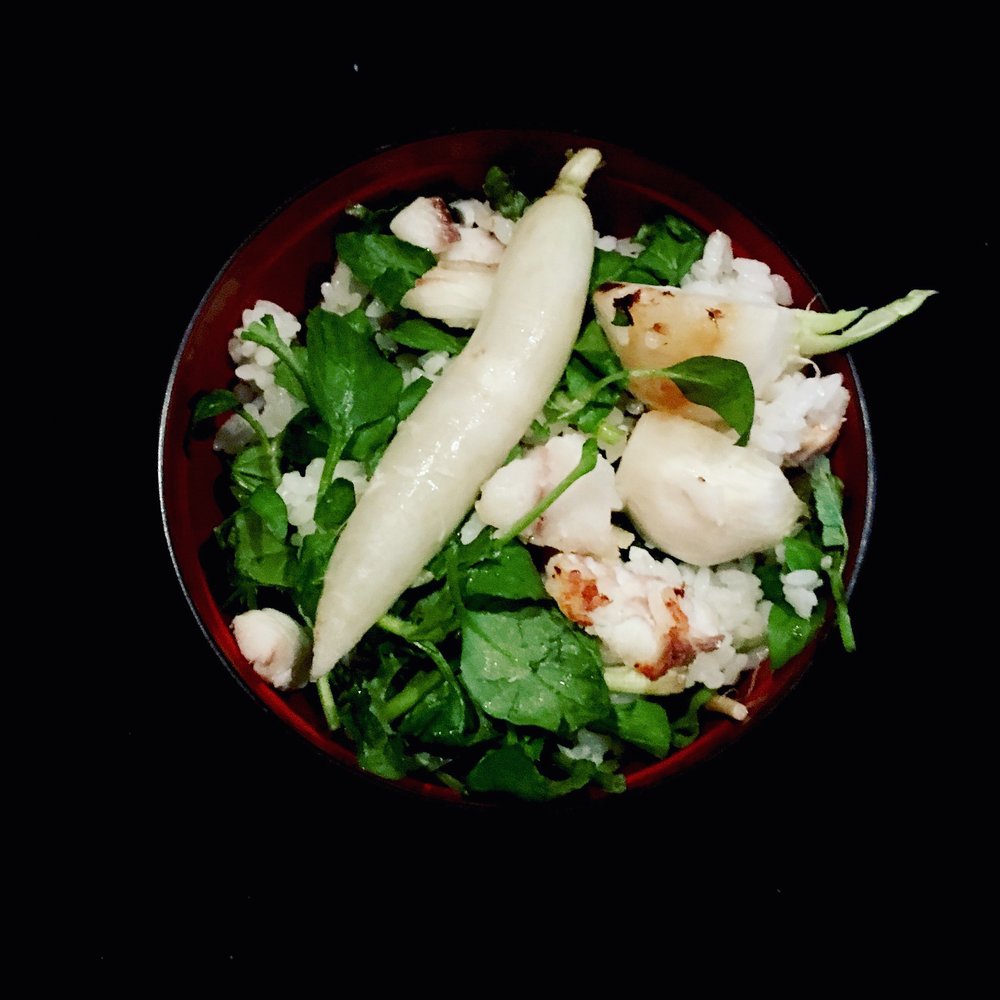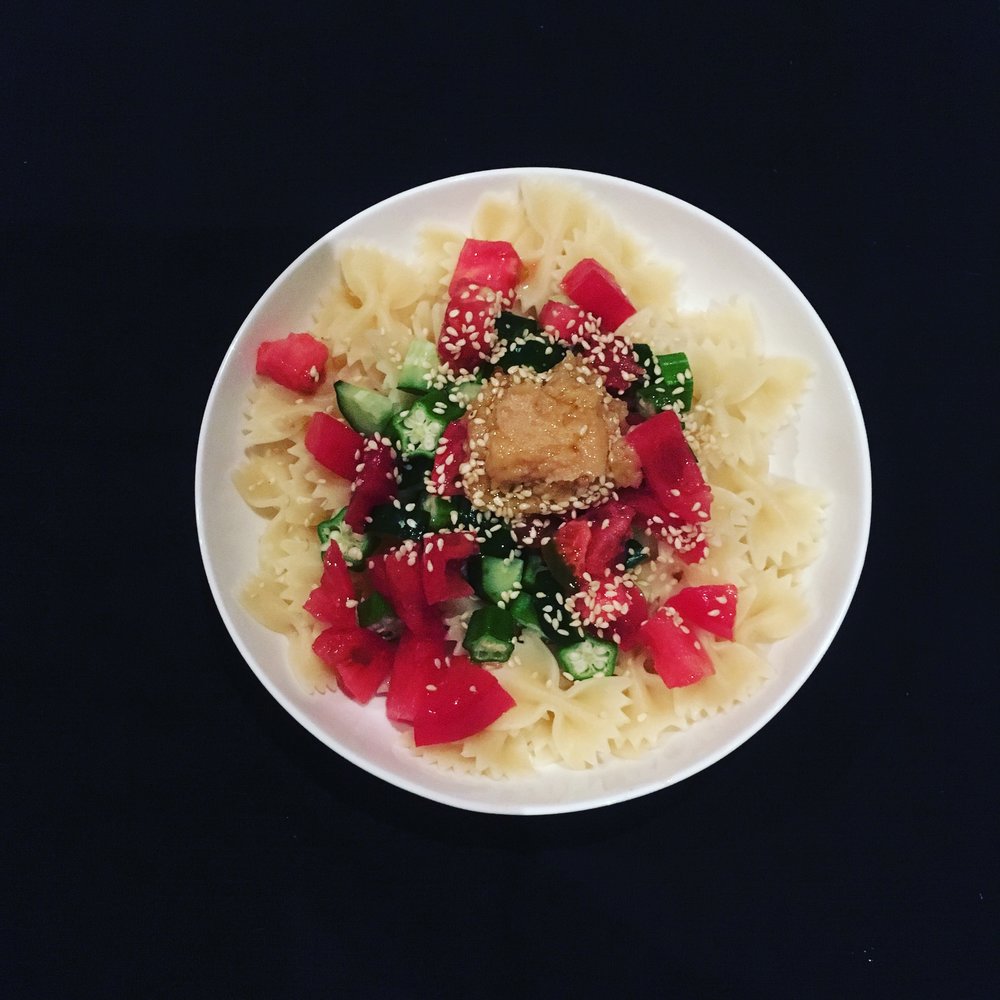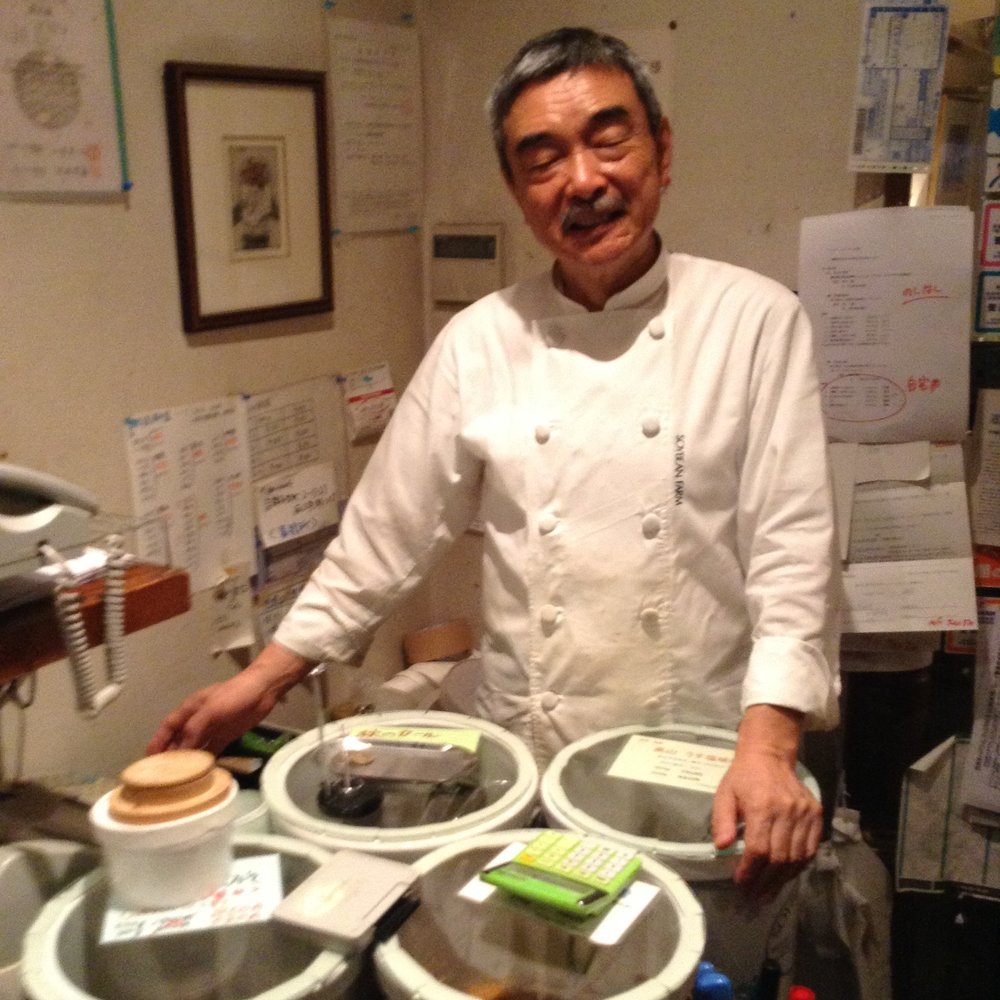In Japan there are plenty of Italian restaurants but many serve not a genuine Italian company cuisine, but rather pasta, or more spaghetti, with a strong Japanese touch. The much classic would be mentaiko – 明太子, some kind of poutargue, or spucy fish eggs, with nori. But it goes much beyond that. At first it is a bit strange to eat spaghetti with Japanese flavours, but there are some really nice combinations. In particular, I find that the nori goes very well with pasta. So I prepared some Japanese style pasta for lunch. I didn’t have spaghetti, so I used penne. And because I had some pickled Chinese cabbage to finish, I prepared some tomato sauce and serve the whole thing together. Deliciously confusing!
Penne Japanese style:
– 200 of penne
– 3 tomatoes very ripe
– 1/8 of pickled Chinese cabbage, if not pickled, you will need a little of white vinegar of your choice in addition, and a pinch of salt
– 1tbs of rice oil, or vegetal snd neutral oil
– 1 handfull of thinly cut nori
– black pepper
Boil water for the pasta, in the meantime in a saucer set the tomatoes diced. Cook at medium heat until it reduces. Cut the cabbage in bite size and add to the tomatoes. If you are using non-pickled Chinese cabbage do the same but add 1tsp oc vinegar and a pinch of salt. Add the ground black pepper to your liking. Once the penne are cooked, deain and serve in the plates. Add the tomatoes-cabbage sauce and complete with a topping of nori. Serve immediately.









